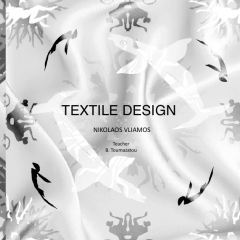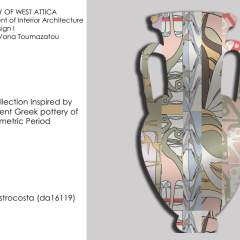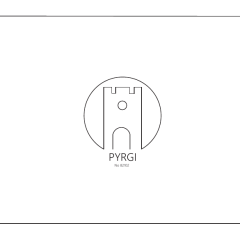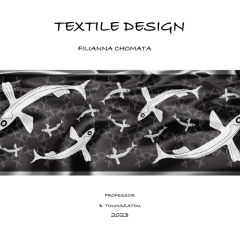Course Tutors
General
The course aims to help students acquire knowledge and a methodology to approach the concept of textile and its products (investmentsand utilitarian item). At the same time, students become familiar with the application of their knowledge to both manufactured and non-manufactured textile;they produce textile designs using digital printing; and they use textile in both interior and exterior spaces.
Course content
Basic knowledge on natural and dyeing substances. Basic knowledge on quality textile. Traditional dyeing and processing methods. Their applications on modern textile. How traditional colorants, fabrics, and yarns establish shape space. Applying isolation methods using liquid and solid insulators. Modern textile and modern coloring applications (smart textiles). Introduction to digital textile printing and modern applications. Design and production of modern textile or 3Dinterlacing or large-surface fabric. Potential function in both interior and exterior spaces, shaping, and human users. The value and uses of textile and textile investments, potential applications in a specific space for specific use.
Programme aims
Students are introduced to the concept of Basic Principles of Natural and Chemical Dyeing in textile processing. Specialized isolation methods with natural and chemical insulating liquids; textile and state-of-the-art digital printing art. Acquisition of applied know-how on the design and production of specialized artistic textile proposals –interlacing-weaving.
Learning Outcomes: Knowledge and Understanding
Master textile dyeing methods and colorants; key multiple-application isolation methods in lab exercises. Methodology to design textile space investments and multi-purpose and special-useutilitarian fabric. Design proposals applying textile in digital printing. Design and application of a 3D visual woven-interlacingcreation. Upon successful completion of the course, students will have the necessary knowledge on influences on and advances in textile design for spaces and humans and the fabric’s visual expression.
Bibliography
-Briggs-Goode, A. (2013). Printed textile design. Laurence King Publishing.
-Briggs-Goode, A., Townsend, K., & Textile Institute (Manchester, England) (Eds.). (2011). Textile design: Principles, advances and applications. Woodhead Pub. (in association with) The Textile Institute.
-Parchure, J.W. (2009). Fundamentals of Designing for Textiles and Other End Uses. Woodhead Publishing India. -Rowe, T., & Textile Institute (Eds.). (2009). Interior textiles: Design and developments. CRC Press (u.a.).







